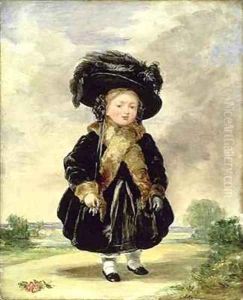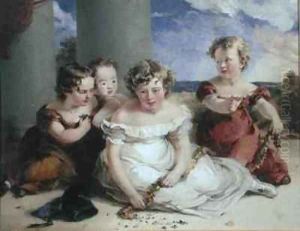Stephan Poyntz Denning Paintings
Stephan Poyntz Denning was a British portrait painter born in the late 18th century who achieved a certain level of prominence for his work during his lifetime. Born in 1795, Denning was active during a period of British art that was characterized by a transition from the Rococo style of the 18th century to the more austere and morally driven art of the Victorian era.
Denning's early life and artistic training are not as well documented as those of some of his contemporaries, but it is known that he developed a reputation for his skill in portraiture. He excelled particularly in miniature portraits, a popular format during the Regency and Victorian periods, when such intimate and personal art pieces were often exchanged among the aristocracy and upper classes.
Throughout his career, Denning exhibited works at prestigious institutions such as the Royal Academy in London, beginning in 1814. He became known for his detailed and sensitive portrayals, capturing the likenesses and personalities of his subjects with a delicate touch. His style was typical of the period, characterized by fine brushwork and a focus on the facial features and expressions of his sitters.
Despite his success as a portraitist, Denning did not achieve the same level of fame as some of his contemporaries, such as Sir Thomas Lawrence or later, the Pre-Raphaelites, who came to dominate the British art scene. Nevertheless, his work provides an important glimpse into the society and culture of his time, offering insights into the fashions, ideals, and aesthetics of the early 19th century.
Stephan Poyntz Denning continued to paint and exhibit his work until his death in 1864. His portraits remain as a testament to his skill and are preserved in various art collections, occasionally appearing in art auctions and galleries dedicated to historical British art. Although not a household name, Denning's contribution to the genre of portrait painting in his era is recognized by art historians and collectors alike.


